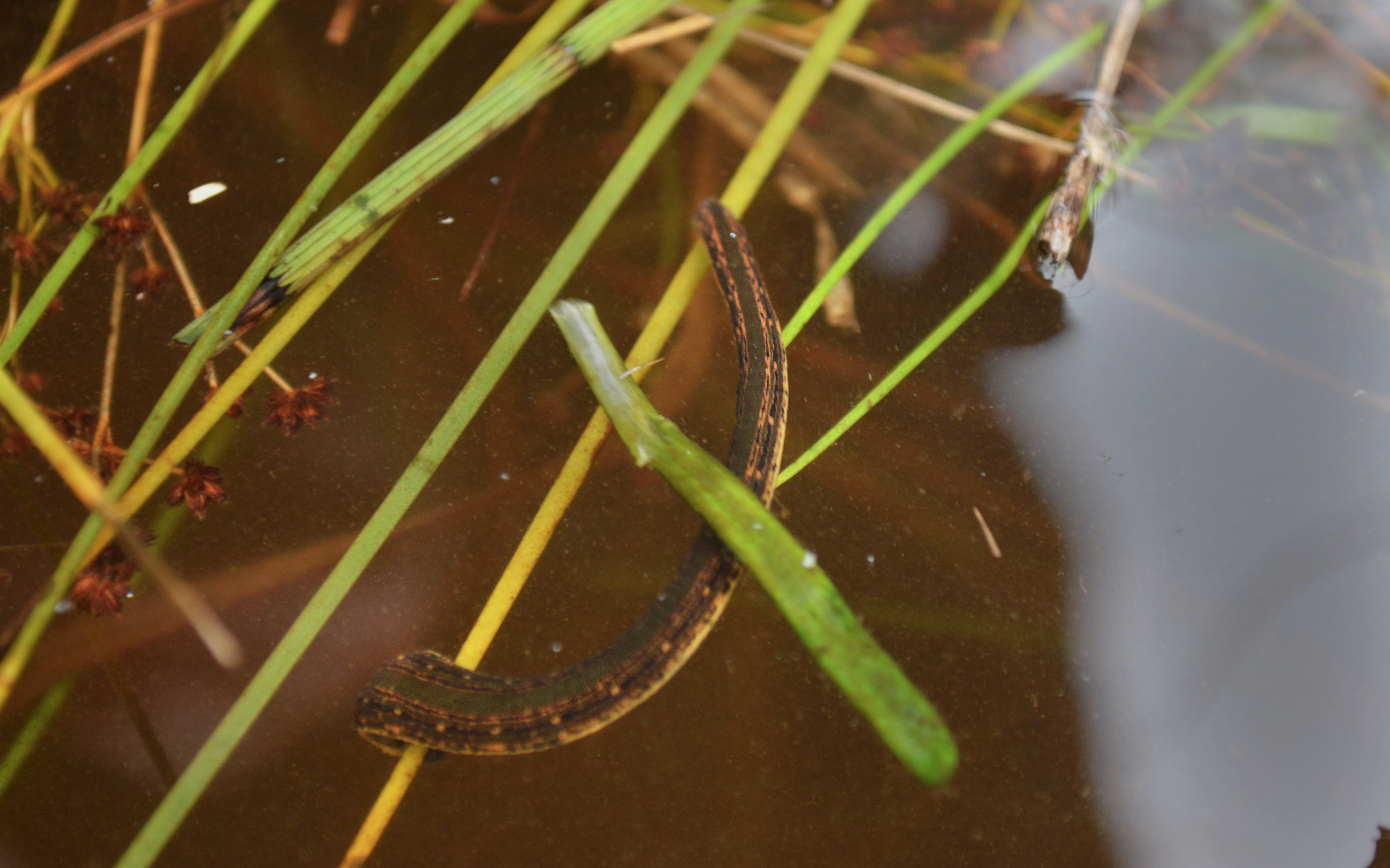RZSS welcome bloodsucking invertebrates in time for Halloween
31/10/2023 in RZSS
 This Halloween season, the Royal Zoological Society of Scotland (RZSS) is taking steps to help save another of Scotland’s threatened wildlife species – the medicinal leech.
This Halloween season, the Royal Zoological Society of Scotland (RZSS) is taking steps to help save another of Scotland’s threatened wildlife species – the medicinal leech.
Although some might say the species is less charismatic than others that the wildlife conservation charity cares for, medicinal leeches have played an important part in human history and now they need help.
Once widespread, medicinal leech populations have dramatically declined across Europe, particularly in the UK due to their historical use in medicine. Many of those taken from wild populations were used for bloodletting and those left today face threats including habitat loss and changes in land use.
RZSS is working with Buglife to safeguard the future of these tiny bloodsuckers as part of the Species on the Edge programme. Under license from NatureScot, staff from RZSS’s conservation team and Buglife took a trip to one of only three known lochs in Scotland that still have medicinal leeches, to source founders for the new conservation breeding programme.
Fourteen leeches were collected and are now in their new home in a specially designed facility at RZSS’s Highland Wildlife Park, where conservation team staff will care for them and attempt to breed as many leeches as possible to release back into the wild.
Dr Helen Taylor, conservation programme manager at RZSS, said, "Our wildlife conservation charity has been championing overlooked, threatened invertebrate species for a while, but this might be our biggest challenge to date in terms of getting people to fall in love with a species.
“Medicinal leeches have a fascinating history and form part of complex freshwater ecosystems, but people can be a bit grossed out by the whole blood-sucking thing. They are certainly very different from any other animal we look after in the conservation department, but that just makes them more interesting.
“This is a species where individuals are both male and female at the same time, have a ‘brain’ in each of their body segments, can go without feeding for weeks, and live exclusively on blood. We are excited to be looking after such an unusual species, and to be helping secure a long-term future for them in Scotland through our dedicated conservation breeding and reintroduction programme.”
Craig Macadam, Conservation Director at Buglife, said “Medicinal Leeches have an important place in our medical history but are now one of the rarest invertebrates in Scotland. Conservation breeding was first suggested for this species nearly 30 years ago. It’s fantastic that the Species on the Edge project means that we can now take this important step to secure the future of the Medicinal Leech in Scotland.
This work is possible thanks to the Species on the Edge project – a major programme to help some of Scotland’s most threatened species. The conservation breeding of Medicinal Leeches is being made possible through the Helping Nature Fund, part of the Nature Restoration Fund. Managed by NatureScot, the Helping Nature Fund is an element of the Scottish Government’s flagship £65 million Nature Restoration Fund.
[ENDS]
Images:
High-res images are available at dropbox.com/scl/fo/gv07h7j0kzynd6qyqofw4/h?rlkey=jqw426q4xxg3dxeaad8vinp9v&dl=0
Images are free to use but must credit RZSS
Notes to editor:
- You can find out more at [leech link]
- The Nature Restoration Fund helps to restore species and habitats, protect our marine and coastal areas, and eradicate invasive, non-native species, as well as improving the health and wellbeing of local communities. These projects are taking practical steps to help against the twin crises of climate change and biodiversity loss and restore Scotland’s natural environment: scot/funding-and-projects/scottish-government-nature-restoration-fund-nrf
About the Royal Zoological Society of Scotland rzss.org.uk
- The Royal Zoological Society of Scotland (RZSS) is a wildlife conservation charity with a bold vision: a world which protects, values and loves nature
- Edinburgh Zoo and Highland Wildlife Park are gateways to the natural world through which people can experience nature, learn about the challenges facing wildlife and discover how we harness our expertise in conservation science and animal care alongside the unique power of the RZSS family – our teams, supporters and partners – to save animals from extinction
About Buglife
- Buglife is the only organisation in Europe devoted to the conservation of all invertebrates. Our aim is to halt the extinction of invertebrate species and to achieve sustainable populations of invertebrates. Invertebrates are vitally important to a healthy planet – humans and other life forms could not survive without them. The food we eat, the fish we catch, the birds we see, the flowers we smell and the hum of life we hear, simply would not exist without bugs. Invertebrates underpin life on earth and without them the world’s ecosystems would collapse.
About Species on the Edge
- Species on the Edge is a ground-breaking multi-partner species conservation programme dedicated to supporting vulnerable and threatened species found along Scotland’s coast and islands. Funded by The National Lottery Heritage Fund, the partnership consists of Amphibian and Reptile Conservation, Bat Conservation Trust, Buglife, Bumblebee Conservation Trust, Butterfly Conservation, NatureScot, Plantlife, and RSPB Scotland.
- The programme is funded by The National Lottery Heritage Fund, all eight programme partners, Esmee Fairbairn Foundation, Dulverton Trust, John Ellerman Trust, Banister Trust, and the Scottish Government.
For further information, please contact comms@rzss.org.uk
Featured Articles

An update from the Budongo Forest
19/04/2024 in Conservation

Edinburgh Zoo named best zoo in Scotland
15/04/2024 in Edinburgh Zoo

























Follow EZ